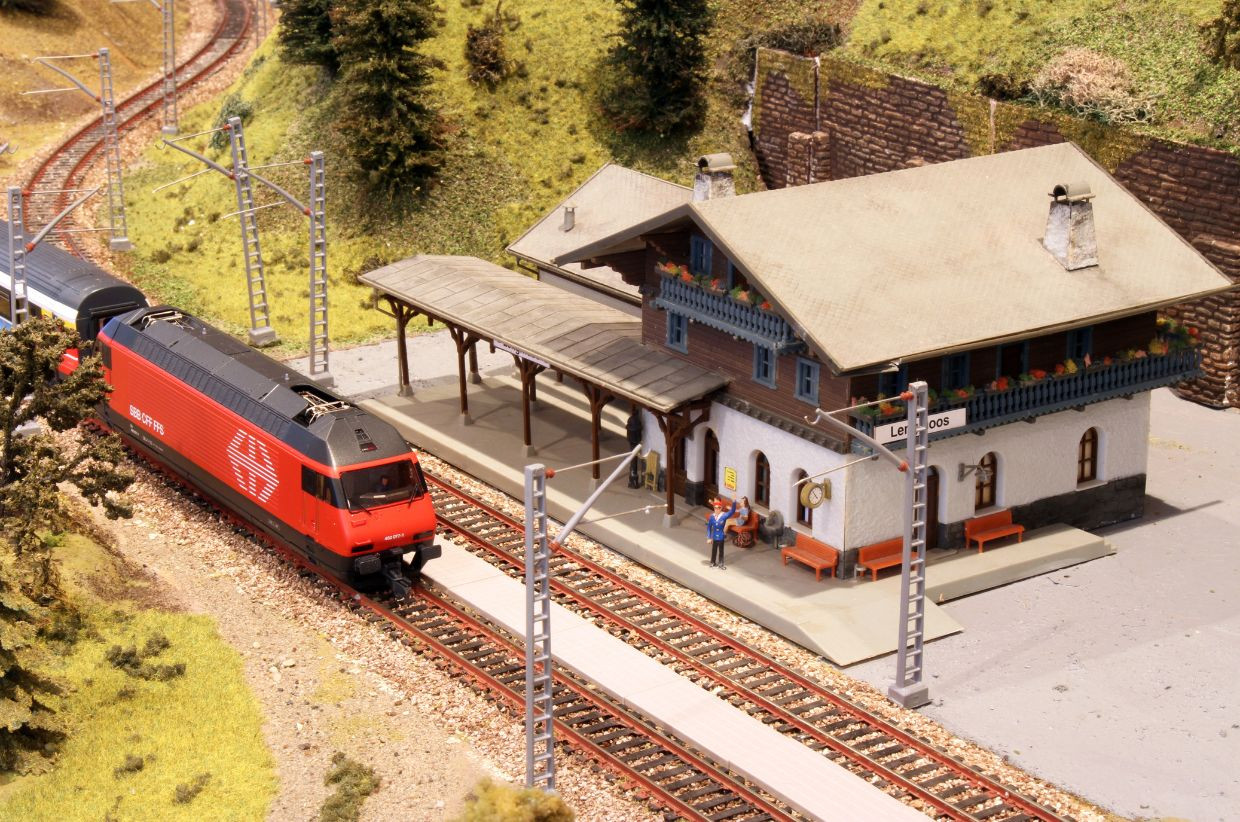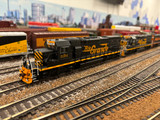How To Make Your Model Train Run More Efficiently
So, you’ve built your layout, weathered your rolling stock, and laid down a perfect track. You switch your train on only to find it travels lethargically around the track like an elderly tortoise. The disappointment sets in, and you wonder what you got wrong.
The good news is that a slow train could benefit from one of several well-known fixes. Read on to learn how to make your model train run more efficiently.
Quick Tips for Fixing Train Speed
- Clean the train/track
- Check the power supply and electrical components
- Examine how the train behaves on curves and inclines
How Do Model Trains Get Power?
If you need to fix your laggard train, it helps to understand how a model train gets its speed in the first place. Like real trains, model trains receive their power from the rails they run on. However, unlike most model trains, real trains use a third rail to pick up the charge.
In the model version, the wheels need to maintain excellent contact with the rails in order to pick up a strong charge. The electricity transfers through wires to the motor, which makes the train run. With control systems such as DCC, you can control exactly which parts of your train (and your layout) receive power at what times.
Ways To Fix a Slow Train
You’ll need to test a few things to figure out what’s causing your train to move slowly. We’ll start with the simplest solutions and move to the more complicated ones.
Clean Your Track/Train
If it’s been some time since you last ran your train, there’s a good chance that dust has accumulated on the tracks. When dust settles on the tracks, it will also make contact with the wheels of your locomotive and rolling stock. While you might not be able to see the dust, enough of it can get between the wheels and the rails to cause a poor connection.
The solution is to clean both the track and your train’s wheels. White vinegar and isopropyl alcohol are excellent choices for wiping down your tracks. Make sure to use a lint-free cloth. For the wheels, dip a cotton swab into the cleaner and run it all along the wheel grooves.
Rebalance the Weights
Many times, the weight of a train out of the package is not quite enough to achieve a solid connection with the track. Model railroaders often add additional weights where they’re needed to help maintain a strong connection. If you notice that your train seems to become sluggish when going around curves, this is a key sign that some of the wheels aren’t getting a good connection.
Check Your Power Source
Since your power source is the thing sending juice to your train, it makes sense to have a look at the voltage. Some power packs just don’t have the capability to run trains around longer track layouts.
For example, some people start model railroading by buying a starter kit. When they’re ready to move on to more complex layouts, they keep using the power pack from the kit. Unfortunately, those kits only have the capacity to give just enough power for a basic oval track. You’ll need to upgrade once you finish learning railroading basics.
Are the Joiners Lined Up?
When you’re laying down track, you’ll use joiners to (you guessed it!) join pieces of track together. It’s very important that you line the joiners perfectly; otherwise, power won’t flow through the track pieces at full strength, if at all. If there’s one section of the track where your train seems to slow down, start by determining whether the joiners are out of alignment.
Check the Electrical Connections
If the joiners on the track are in place, you could have a problem with the wiring. Go back over all your wiring and look for anything that appears out of place or connected to the wrong port. Sometimes even one loose wire on a connection can make a significant difference.
Examine Track Gradients
If your layout has inclines, it’s important that they’re not too steep for your train. It takes more power to send a train up an incline than it does to travel straight down the track. If your gradient is too high, the track might not be able to send enough power to the train to manage the slope. Unfortunately, having this problem usually means needing to redo portions of your layout.
Avoiding Efficiency Problems
Often, the best way to deal with track efficiency issues is to not have them in the first place. Below are some tips for avoiding many of the problems outlined in this post.
Don’t Rush
Take your time when you’re designing and building your track. Read all the manuals. Look up reviews and common problems so that you know what to expect. Measure everything two or three times to ensure things will fit together exactly. If you rush the process, you’ll end up making mistakes. Plus, you’ll miss part of the fun of model railroading.
Don’t Try Highly Complicated Layouts
When you’re still relatively new to model railroading, it’s essential to learn how to distinguish beginner, intermediate, and expert-level track design. Too many beginners see a beautiful track design and try to copy it, not realizing the builder is an expert railroader. Remember that model railroading isn’t a race, and there’s no prize for speeding along to the most complicated layouts. Take time to really learn how everything fits together.
Give Your Train Space
Another tip that will make your model train run more efficiently is to give your train plenty of space to change directions. One mistake that new railroaders frequently make is putting in tight curves. These paths can lead trains to struggle on the track, causing derailing and speed problems.
Get Help From the Model Train Experts
If you’re still having trouble with your train’s speed, get in touch with us at Midwest Model Railroad. We love helping people troubleshoot their train problems. We can also help you find the right parts to fix the problem.
Midwest Model Railroad carries one of the largest and most well-organized collections of model railroading equipment in the country. We offer popular items like Kato N scale rolling stock and top-of-the-line DCC power systems. Contact us today to let us help you find the perfect parts for your next modeling project.

Recent Posts
-
Capturing History in Miniature: The Art of Prototype Modeling in the Model Railroad World
Prototype modeling in the model railroad world involves creating miniature replicas of real-life tra
-
Unveiling the Imaginative World of Fictional Railroads: Where Creativity Meets the Rails
Model railroading has long been a hobby rooted in historical accuracy and meticulous attention to de
-
Creating Your Model Railroad: Step-by-Step Guide to Laying Track
Model railroading is a fascinating hobby that allows enthusiasts to recreate miniature worlds of rai




